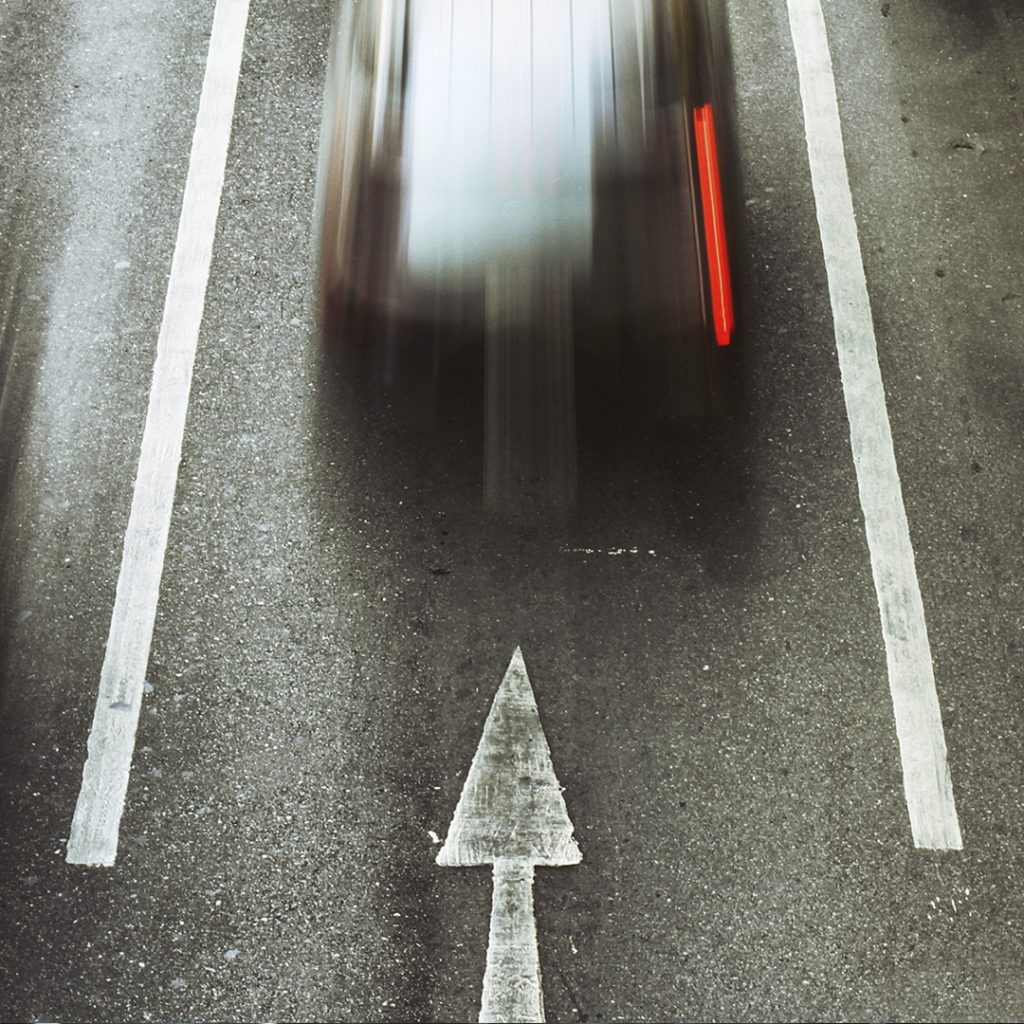
Driving is an activity that requires all the attention we are capable of. Taking the vehicle on the road while minimizing the risk of accidents, means keeping a whole series of different parameters under control. From the lights to the steering wheel, the fuel tank level, and the battery. Of all of them, one variable has the greatest influence on the risk posed by our vehicle: speed.
Behind the wheel, speed is sometimes not given as much attention as it should be, and many people allow themselves to exceed the limits, even by just a few kilometers per hour. The truth is that those few extra kilometers per hour considerably increase the chances that we end up crashing into something. This is because speed is one of the main risk factors in traffic accidents.
And in that sense, the numbers don’t lie. According to the United States Highway Traffic Safety Administration, in the first six months of 2023, accidents on the country’s roads caused by excessive speed accounted for a third of the total. In the case of the European Union, it is estimated that speed was behind between 10 and 15% of all accidents and 30% of fatal accidents.
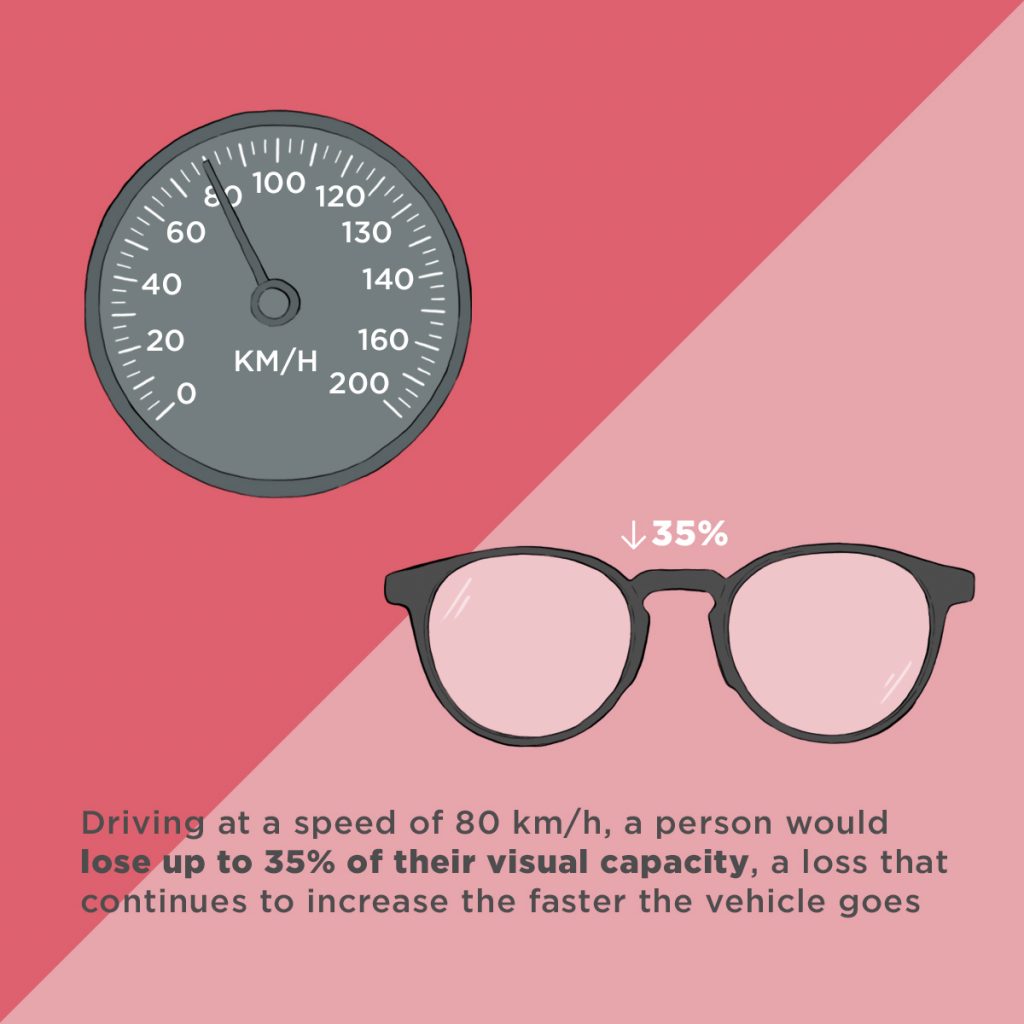

Speed and accidents
To begin with, there is a direct relationship between the speed at which a car travels and the probability of it suffering an accident, a relationship analyzed in a significant number of studies, and which has been clearly demonstrated. The faster a vehicle goes, the more likely it is to end up crashing into something.
So much so that, according to a study by the European Commission “a change in the average speed of 1 km/h will result in a change in the number of accidents of between 2%, in the case of roads with a limit of 120 km/h, and 4% on 50 km/h roads. That is, for every extra kilometer per hour (at 120km/h) of speed on a road, the number of accidents increases by 2%.
The problem with driving too fast is that its consequences are difficult to predict. But they are there. Firstly, speed makes it difficult to take corners, a fact that anyone who has gone through driving school will know. This is because it is more difficult to control the car and adjust it to the curve, but also because the greater the speed, the greater the centrifugal force experienced by the vehicle.
“A change in the average speed of 1 km/h will result in a change in the number of accidents of between 2%, in the case of roads with a limit of 120 km/h, and 4% on 50 km/h roads”
Furthermore, the greater the speed, the smaller the margin for reaction that the driver will have, and at the same time, the greater the distance necessary to stop the vehicle. Thus, assuming a reaction capacity of 0.75 seconds, at a speed of 50 km/h, the vehicle will travel 10 meters before even starting to brake, a distance that will go up to 25 meters if we drive at the highest maximum speed, usually 120 km/h. But in addition, the average reaction speed of a person would be between 1.5 and 4 seconds. We are looking at distances that in many cases could be the difference between crashing the vehicle into something or not.
At the same time, speed could even influence our visual perception ability. The faster we go, the less we are able to see what surrounds us. Therefore, when you are in a moving vehicle, it is almost impossible to keep track of the things you see. Driving at a speed of 80 km/h leads to a 35% loss of visual capacity, a loss that increases the faster the vehicle goes.
The data from the European Commission includes the devastating conclusions of an Australian study that shows that there is a certain equivalence between the risk caused by going too fast and that of driving after consuming alcohol. According to the study’s conclusions, “exceeding a speed limit of 60 km/h by 5 km/h is comparable to the risk of having a blood alcohol concentration of 0.05gr.” And if that were not enough, exceeding the same limit by 10 km/h increases the risk of suffering an accident more than “driving with a blood alcohol concentration of 0.08%gr.”
Driving at a speed of 80 km/h leads to a 35% loss of visual capacity, a loss that increases the faster the vehicle goes.
According to the Dutch Institute for Road Safety Research, the conclusions of studying the relationship between accidents and speed are clear: there is a direct relationship between driving above the speed of other vehicles (that is, above the limit) and the risk of suffering an accident. A relationship that is not observed in the opposite case: while the faster you drive, the more likely you are to end up involved in an accident, this is not the case when you drive below the speed of other vehicles.
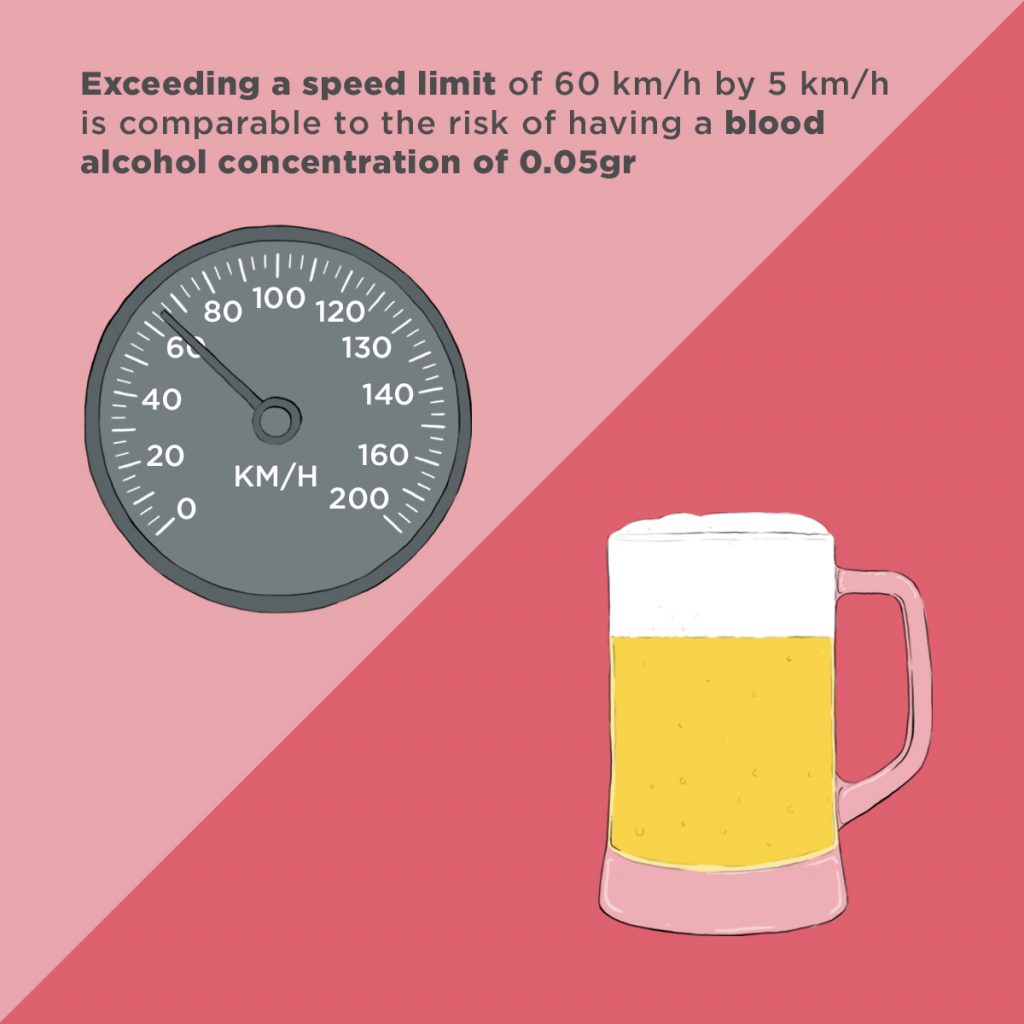
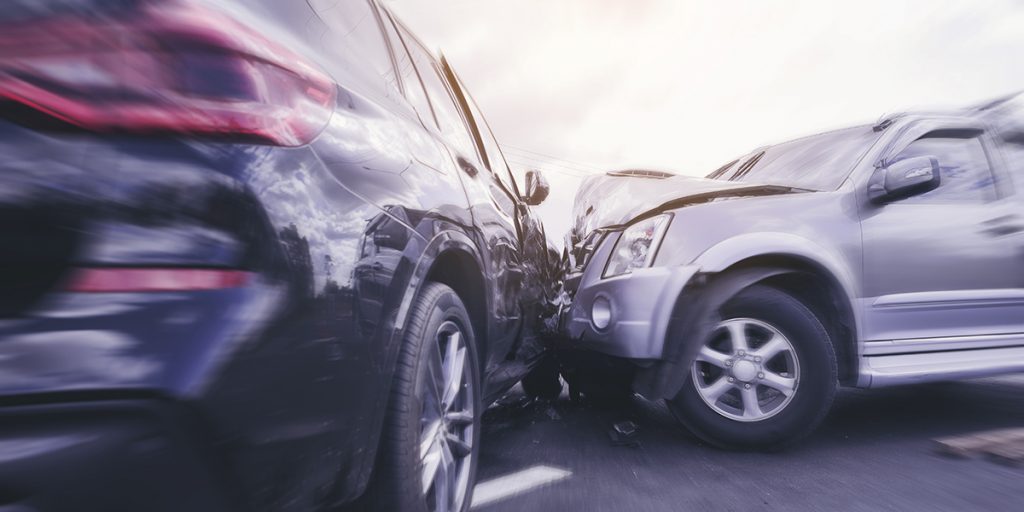
Speed and mortality
Driving speed also directly influences the consequences of having an accident. The higher the driving speed, the greater the forces exerted on the vehicle. Thus, there is a direct relationship between speed and the risk of injury, a relationship that implies that the chances of ending up injured increase exponentially when speed increases.
Everything revolves around kinetic energy, which is what is produced in a collision. It is the energy of movement, which the car has accumulated due to the direction and speed at which it is traveling. And it is an energy that increases a lot with small increases in speed, so a speed of 30 km/h will lend half the kinetic energy in the car than a speed of between 40 and 50 km/h.
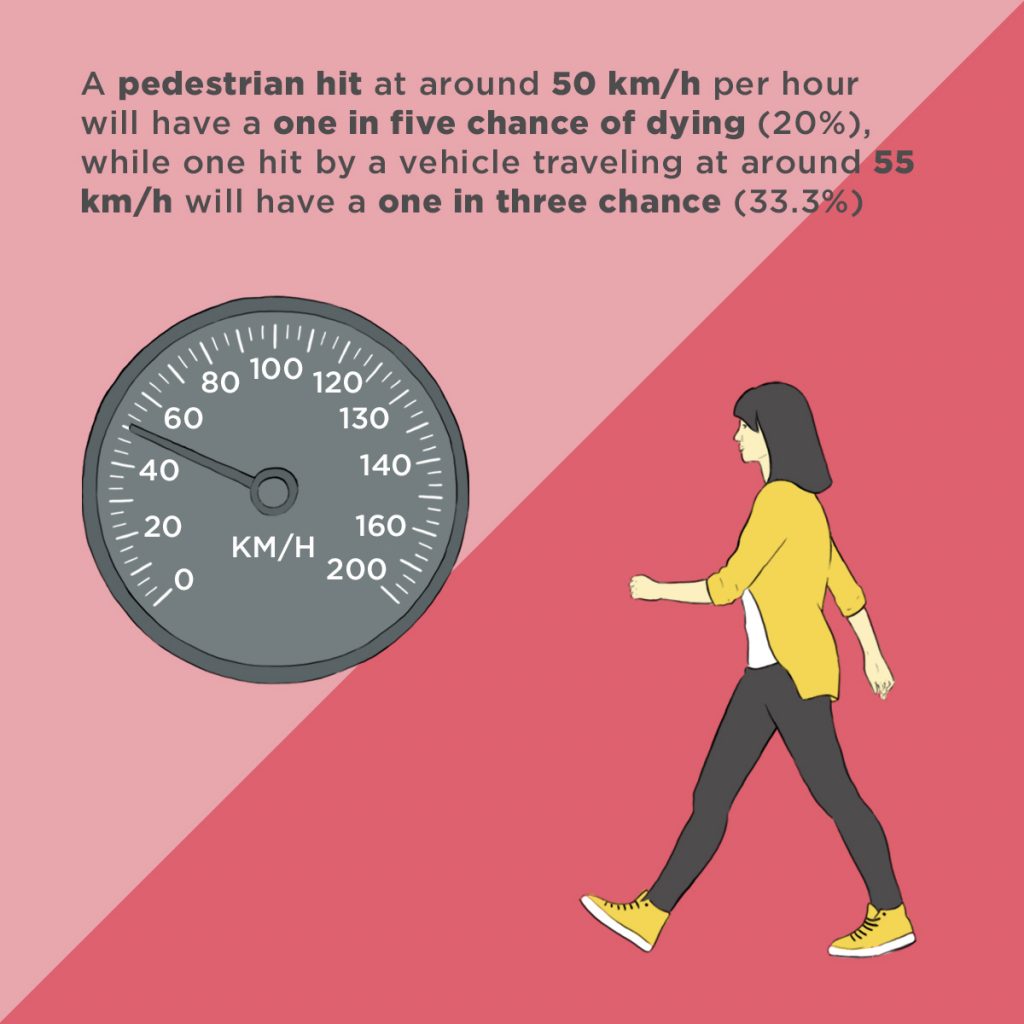
The effect of increased kinetic energy is reflected in the direct relationship between speed and injuries. Thus, according to studies, reducing speed by 1% reduces accidents with injuries by 2%, accidents with serious injuries by 3% and fatal accidents by 4%. The speed of the vehicle also influences the potential mortality of an accident. According to Brake, a British NGO dedicated to road safety, a pedestrian hit at around 50 km/h per hour will have a one in five chance of dying (20%), while one hit by a vehicle traveling around 55 km/h will have a one in three chance (33.3%).
Additionally, the effects of kinetic energy also make car safety devices much less effective. Therefore, at high speeds, seat belts, airbags and even resistance to deformation will be of less use.